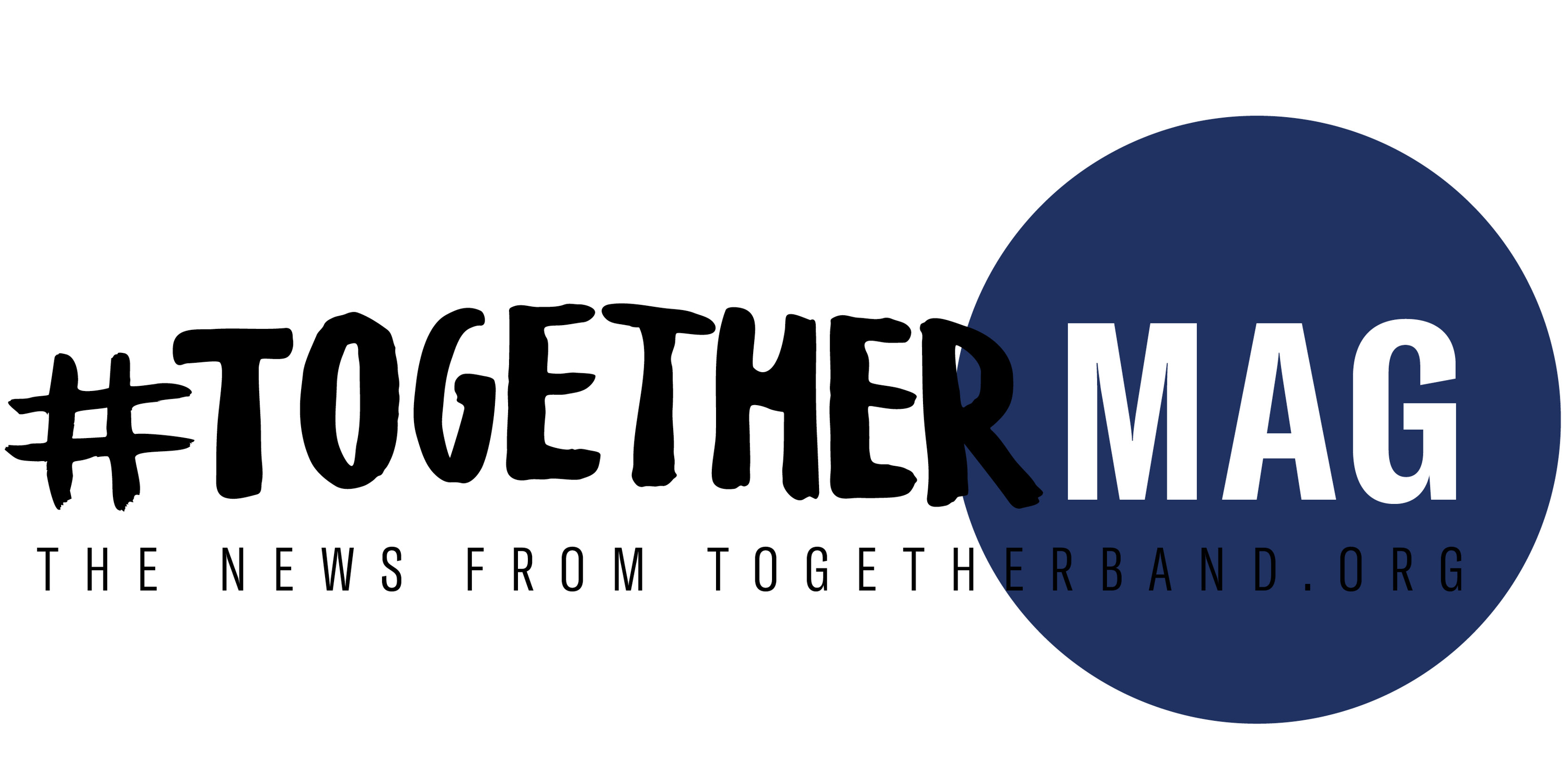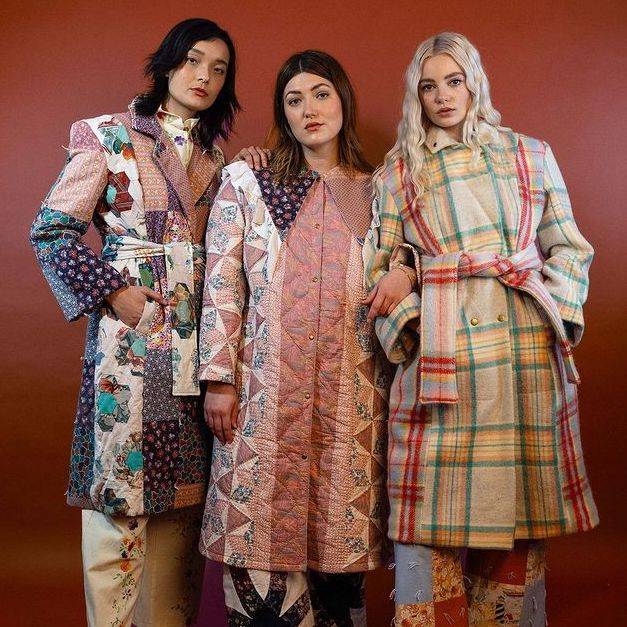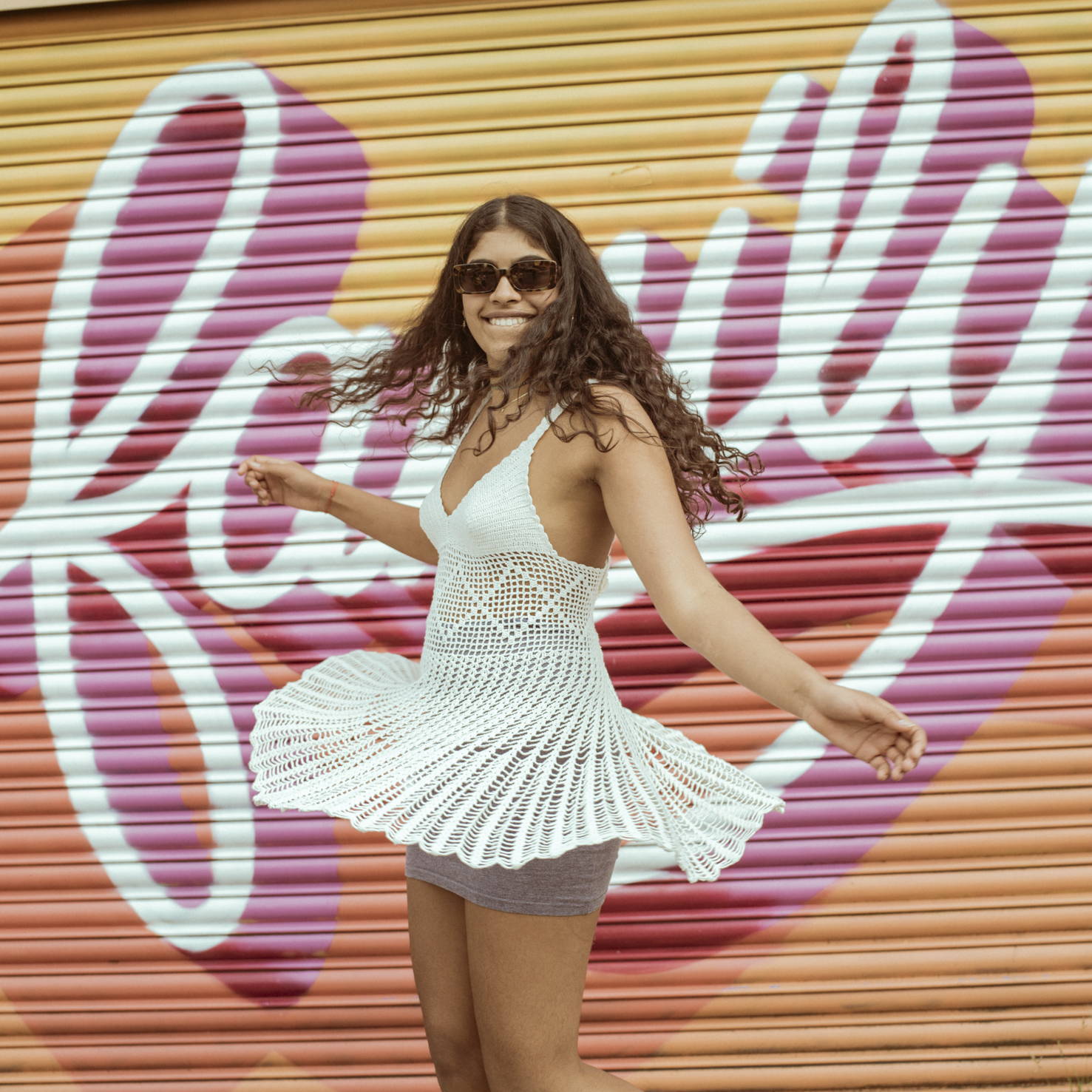Goal 12: Responsible Consumption and Production
YOUR A-Z GUIDE TO SUSTAINABLE FASHION
Not sure whether you should be shopping for linen or lyocell but want to build a more sustainable wardrobe? Here’s everything you need to know about fibres and fabrics and their impact on people and the planet.
By hannah rochell
21 september 2020
Sustainable fashion: it's one of the easiest and most proactive thing you can do support Goal 12: Responsible Consumption and Production. By reading the label on the next thing you buy, you’ll be checking what fabrics and fibres any new clothes you buy are made from, and choosing the most planet-friendly option.
Don’t panic if you already own clothes made from non-sustainable materials - the best way to be responsible is to wear and enjoy them for as long as possible, wash and care for them consciously, and recycle them if possible at the end of their life. Then, choose a replacement in a more sustainable fabric.
A is for...apple leather
Pellemela is a leather-like material made by a company called Frumat from the apple skins and core waste which would otherwise not be used in the production of apple juice. It’s a great vegan alternative because it’s just as durable as leather and has a similar texture.
B is for…Bottles
Unlike virgin polyester, which is created as an entirely new plastic product, recycled polyester is made from PET, often sourced from plastic bottles. The plastic is made into small chips, before being heated and turned into yarn. It’s not ideal since it still releases microplastics when you wash it, but it gives plastic a new life that would have otherwise ended up in landfill or polluting our oceans.
C is for…Circular fabrics
Some brands, like British casuals label Rapanui, use a circular design process. Every Rapanui garment is made from organic cotton that can be reused at the end of its life. When the customer has finished with their item, they can send it back to Rapanui, who then recycle the cotton into new yarn and new items. The same goes for our BOTTLETOP bags - if you return them to us, we will reuse the ring pulls.
D is for…Denim
Over its life, a pair of jeans uses over 10,000 litres of water, from the irrigation used to grow the cotton, to dying, and washing once with the consumer. But did you know you’re not even meant to wash your jeans? The CEO of Levi’s is said to have not laundered his for over 10 years. If you’re buying a new pair, opt for pre-loved, organic or circular, such as MUD jeans.
E is for…ECONYL®
ECONYL® - a fabric made from discarded fishing nets and other waste materials - is ever growing in popularity. It’s often used to make swimwear, and the brand Napapijri has just released a jacket made from ECONYL® that can be put in a recycling machine at the end of its life, using the ECONYL® again and again...
F is for…Feathers
Feathers and down ought to be a byproduct of the poultry meat industry, and therefore not plucked from a live animal, but sadly that isn’t always the case. Look for the Responsible Down Standard (RDS) to ensure that animal welfare standards have been adhered to.
G is for…GOTS
The GOTS - Global Organic Textile Standard - certification allows you to buy organic clothes with confidence. Only textile products with a minimum of 70% organic fibres can be GOTS certified. Look for the logo - a green circle with a white shirt in the middle.
H is for…Hemp
Hemp is fast growing and adaptable, which means it can grow in lots of environments without the need for pesticides, fertilisers and irrigation. It also improves the quality of the soil as it grows.This makes it an incredibly environmentally friendly fibre.
I is for…Innovative Fabrics
Technology is moving at a fast pace when it comes to developing new and exciting textiles from recycled manmade and natural waste. Read more about fashion fabrics made from food waste in our dedicated article.
J is for…Jute
Jute is a 100% biodegradable and very affordable natural fibre that grows well without fertilisers or pesticides. It can be used to make hessian and is very commonly plaited or woven to make the soles of espadrille shoes.
K is for…Kenaf
Kenaf is a plant similar to hemp and jute. It’s fibres can be used to make clothing.
L is for…Linen
Made from the flax plant, linen is one of the oldest known materials. It has naturally hollow fibres which make it breathable and highly water-absorbent, which is why it’s such a popular material to wear in hot weather.
M is for…MycoTEX
MycoTEX is a leather-like textile that is made out of mycelium, which is the spores of mushrooms. Because it is grown in a mould specifically for the garment that it will make, there is no waste whatsoever, and it is fully biodegradable when it reaches the end of its life.
N is for…Nylon
Nylon is a made-made fibre and is made from plastic. It takes a lot of energy to produce, is not biodegradable, and releases microplastics with every wash. Some brands - like Swedish Stockings - now make tights from recycled fibres, which is a much better option.
O is for…Organic Cotton
Organic cotton is produced using no pesticides or fertilisers, and takes 88% less water and 62% less energy to produce than non-organic cotton.
P is for…Polyester
Polyester - the most widely used fabric in the world, making up around 65% of all fibres produced annually - is man-made using petrochemicals, which means it is plastic. This also means it’s not biodegradable, uses a non-renewable fossil fuel (oil) and releases microplastics into the water system every time you wash it.
Q is for…Qmilk
Qmilk is a modern fabric made from protein found in spoiled milk. It can be spun with wool, cotton or viscose and has a soft feel on the skin.
R is for…Rayon
Rayon is often referred to as artificial silk. It is a cellulose fibre usually made from wood pulp. Unless the label states otherwise, the production of rayon can be bad for the environment, using harmful chemicals and trees from sources that aren’t necessarily sustainable.
S is for…Suede and Leather
There are obvious animal welfare issues with leather production, but it also is guilty of clearing rainforest for grazing land, and using harsh chemicals that are harmful for both the environment and the people who work in the tanneries. It is, however, very durable and biodegradable.
T is for…TENCEL™
TENCEL™ is somewhere between a man made fibre and a natural one, being derived from wood pulp, and is an environmentally friendly version of rayon/viscose. TENCEL™ not only sources its wood responsibly, but it uses a closed loop system, which in simple terms means that the chemicals go back in to making more TENCEL™, rather than being flushed out into the local water system. Other similar fabrics made by the same company include LENZING™ ECOVERO™ and LENZING™ branded modal and lyocell.
U is for…Usha Yarns
Usha Yarns is a company that makes sustainable fibres by using off-cuts and recycled PET polyester to make knitting and weaving yarns.
V is for…Viscose
Viscose is another name for rayon. It is often assumed that these fabrics are sustainable simply because they are made from wood, bamboo and other natural materials, but since 30% of the world’s viscose is made from wood sourced from endangered and ancient forests, and much of it is made in highly polluting factories, this often isn’t the case.
W is for…Wool
While wool is hardwearing, long lasting, biodegradable and recyclable, there are issues surrounding its production, such as land use, water usage, global warming and animal welfare. Check that your wool comes from happy sheep reared on well kept land.
Y is for…Yarn
Yarn can be made from all sorts of things, from natural materials including cotton and wool, to man-made ones like recycled plastic bottles. It can then be knitted or woven into clothing and accessories.
Z is for…ZQ Merino
This New Zealand-based wool certification scheme ensures high standards of all of its members. The painful practice of mulesing is banned (as it now is in the whole of New Zealand), and all farmers must uphold the highest standards of environmental land management.
100% of profits from the sales of #TOGETHER products go to charities that advance the Sustainable Development Goals. Find out more here.



